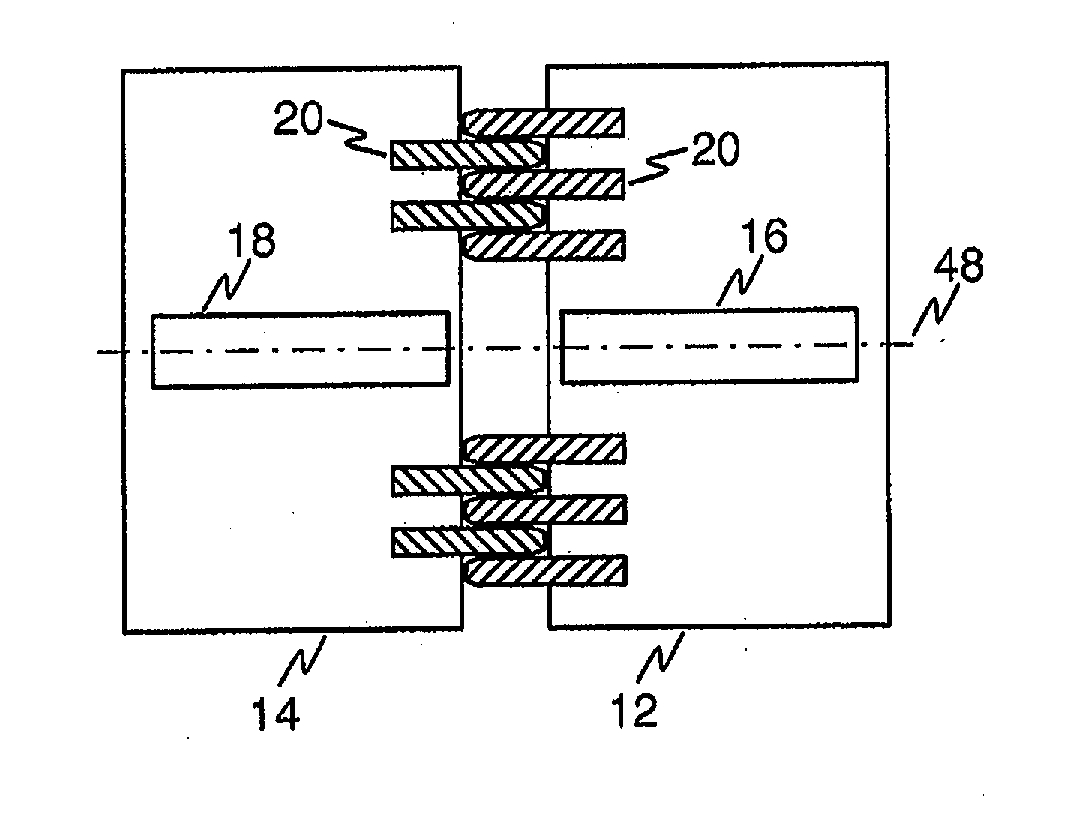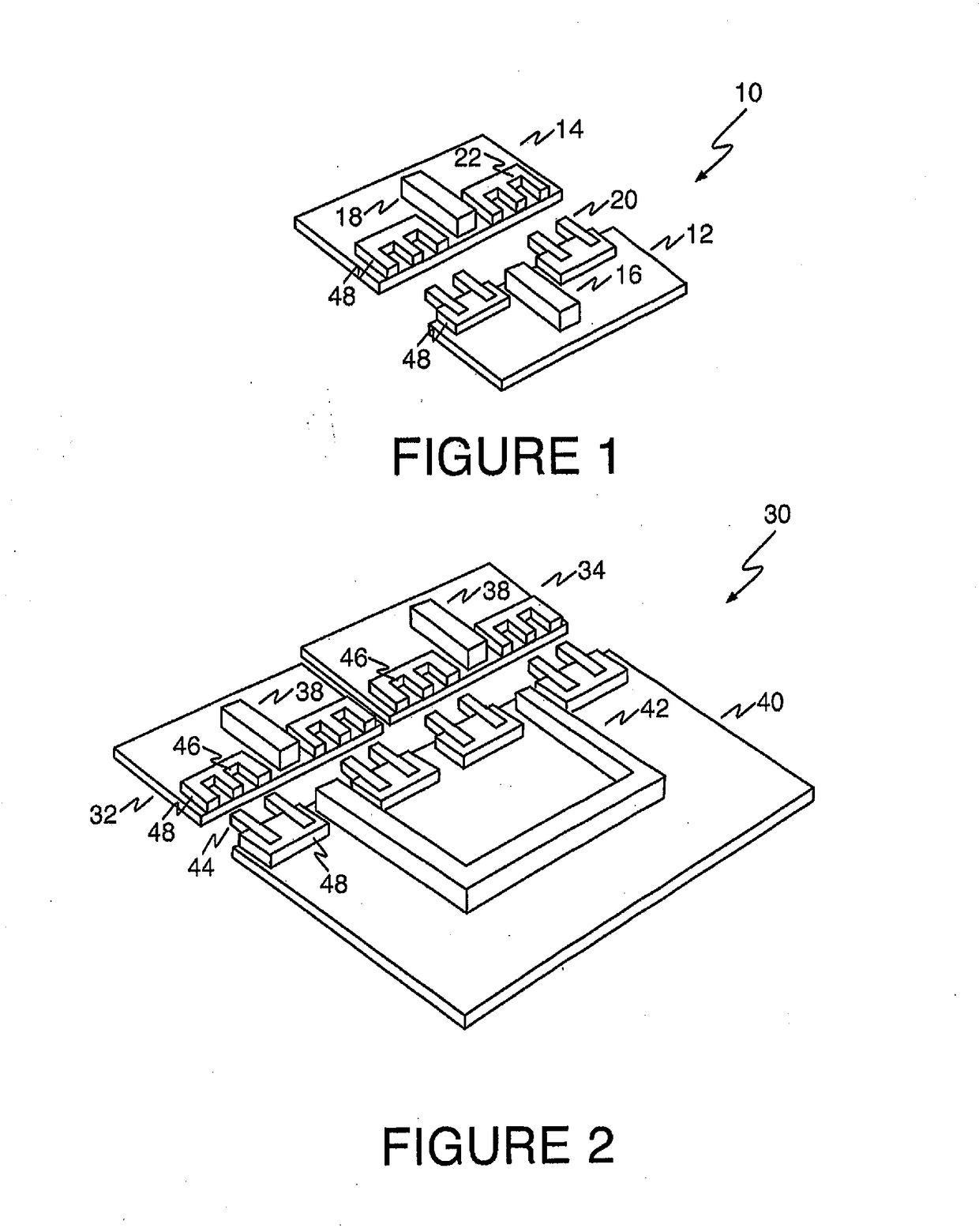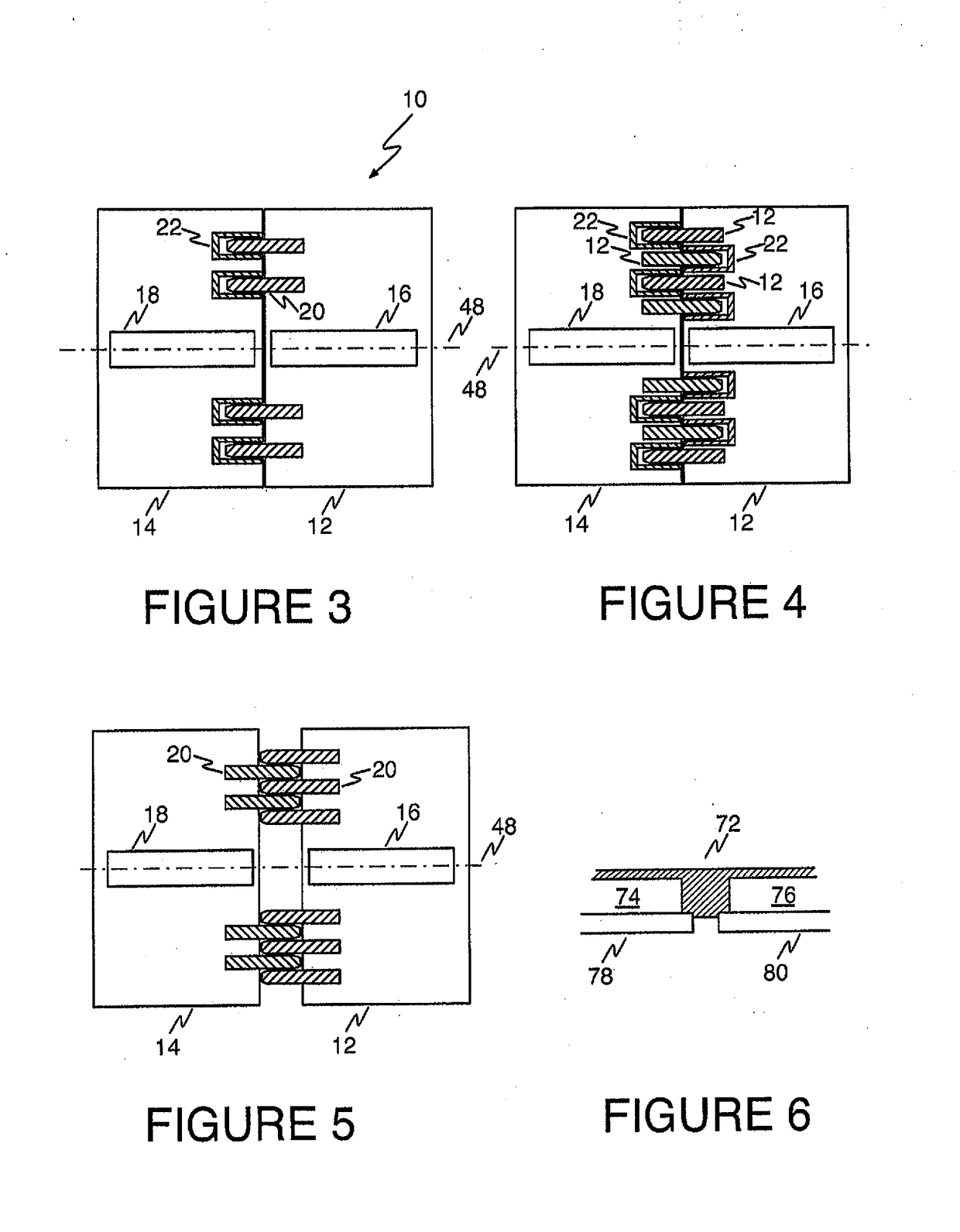Inter-Chip Alignment
a technology of inter-chips and waveguides, applied in the field of microchips, can solve the problems of inability to create various components of a sensing system from the same material, inability to cost-effectively integrate a waveguide and a detector on it, and inability to optimize the quality of detectors, etc., to achieve the effect of reducing the inter-chip spacing, reducing the coupling loss of waveguide and waveguide, and improving the coupling loss
- Summary
- Abstract
- Description
- Claims
- Application Information
AI Technical Summary
Benefits of technology
Problems solved by technology
Method used
Image
Examples
Embodiment Construction
[0023]Persons of ordinary skill in the art will realize that the following description of the present invention is illustrative only and not in any way limiting. Other embodiments of the invention will readily suggest themselves to such skilled persons.
[0024]Referring first to FIG. 1, an isometric drawing shows how two optical components on two different integrated circuit chips can be optically coupled to one another using the teachings of the present invention. An assembly 10 is formed from a first integrated circuit chip 12 and a second integrated circuit chip 14. First integrated circuit chip 12 includes a first optical component 16 disposed on it. Optical component 16 may be an emitter, such as an integrated circuit laser, a detector, or a waveguide. Similarly, second integrated circuit chip 14 includes a second optical component 18 disposed on it. Optical component 18 may be an emitter, such as an integrated circuit laser, a detector, or a waveguide.
[0025]Integrated circuit ch...
PUM
 Login to View More
Login to View More Abstract
Description
Claims
Application Information
 Login to View More
Login to View More - R&D
- Intellectual Property
- Life Sciences
- Materials
- Tech Scout
- Unparalleled Data Quality
- Higher Quality Content
- 60% Fewer Hallucinations
Browse by: Latest US Patents, China's latest patents, Technical Efficacy Thesaurus, Application Domain, Technology Topic, Popular Technical Reports.
© 2025 PatSnap. All rights reserved.Legal|Privacy policy|Modern Slavery Act Transparency Statement|Sitemap|About US| Contact US: help@patsnap.com



